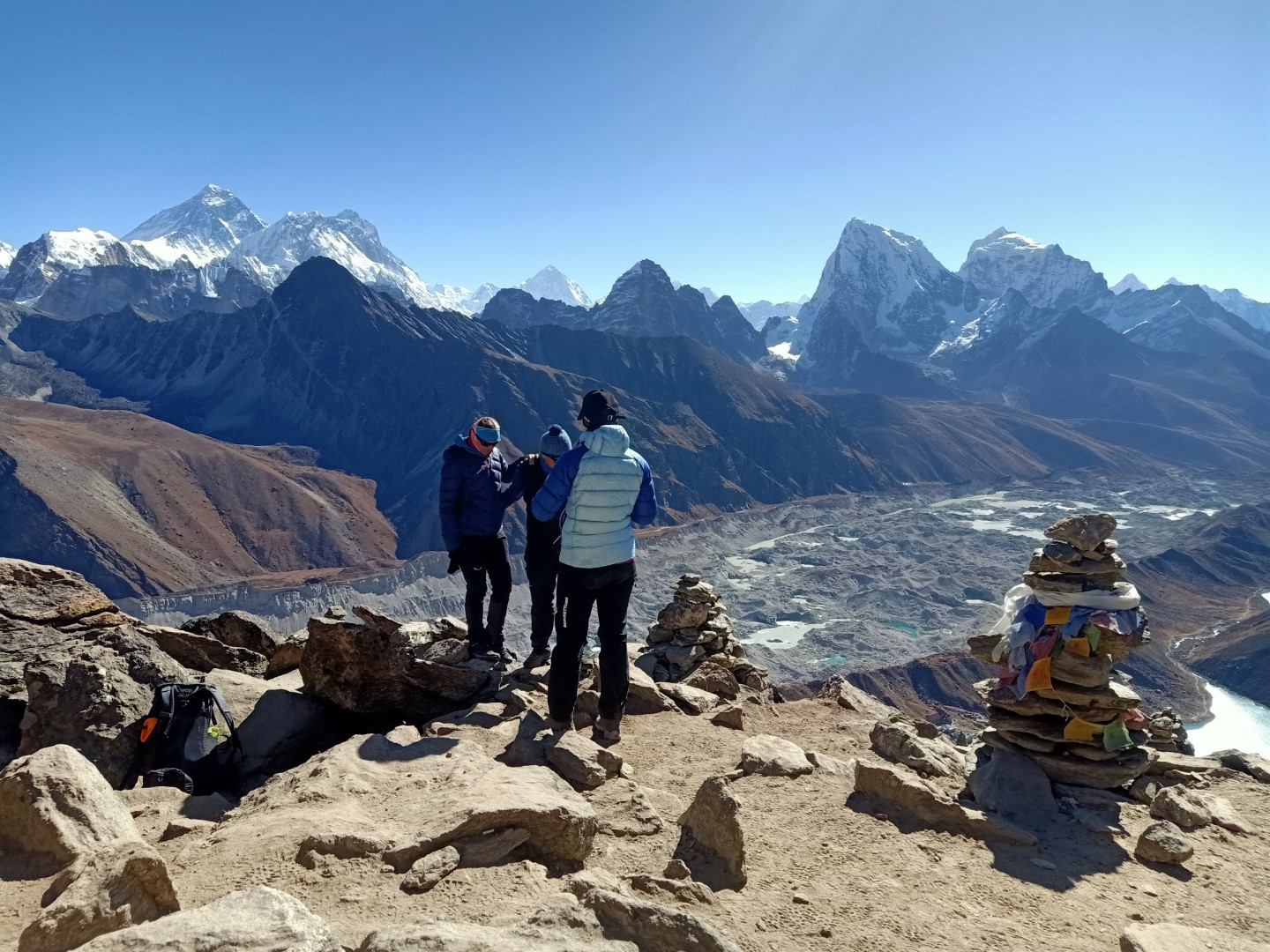Trekking vs hiking: What’s the Difference?
Trekking and hiking are terms that are frequently used synonymously; their meanings might vary depending on the context—both regionally and culturally.
Selecting the “best” trekking and hiking location in the world is a personal decision based on hobbies and preferences. There are countless amazing trekking and hiking locations all over the world.
It’s important to consider variables like difficulty level, seasons, permits, and personal preferences when choosing the ideal location for you.
Trekking vs hiking: Meaning
Trekking involves a longer trip, frequently lasting several days. Trekking might include difficult terrain, higher elevations, and a greater need for physical stamina and preparedness.
Hiking usually describes a less hard, shorter hike that is completed in a single day. Trails for hiking may have designated pathways and be appropriate for hikers of different fitness levels.
The common thing in these two outdoor activities is they involve walking in natural and untouched areas.
Trekking vs hiking: Differences
However, there is a slight difference between trekking and hiking, and the phrases are sometimes used interchangeably. The following general variations are frequently noted:
Duration:
Hiking often comprises day trips or shorter excursions lasting a few hours, whereas trekking typically entails multi-day excursions lasting several days or even weeks.
Along the way, camping or guesthouse accommodations are sometimes necessary for trekking.
Difficulty:
Trekking is physically demanding and challenging. It typically entails navigating difficult terrain, including rocky trails, steep ascents, or even higher elevations where one needs to traverse through cold or snowy terrain.
On the other hand, most hiking trails are well maintained and have clear paths, providing few obstacles and challenges while walking.
Altitude:
Trekking can require ascending to great heights and occasionally reaching the base camp of mountains or passes, especially in hilly areas like the Himalayas or the Alps.
Hiking rarely involves a considerable height rise and often occurs at lower elevations, sometimes in forest or flat hill terrain.
Gear and equipment:
Trekking may need more thorough planning and specific equipment, particularly for longer journeys or those across difficult terrain.
Additional gear for treks may be needed, such as a backpack, trekking poles, the right trekking shoes, cold weather clothing, and perhaps camping gear.
In addition, trekkers must be better equipped in terms of physical preparedness, acclimatization, and carrying provisions like water and food.
Hiking usually needs less specific gear, often necessitating appropriate clothing, a daypack, and comfortable walking shoes.
Scenery and destination:
Trekking offers the chance to enjoy spectacular vistas and expansive views of the mountains. It accesses isolated regions that are difficult to reach by other means, particularly applicable in remote wilderness or hilly regions.
Hiking is frequently to discover beautiful paths and natural features, such as hilly areas, vistas, waterfalls, and dense forests.
Cultural and Exploration Aspect:
Trekking in some areas frequently entails traveling through rural villages and meeting locals, connecting to attain benchmarks on a specific destination and location.
Therefore, it allows trekkers more encounters with the local way of life as the trip passes through isolated areas and varied terrain.
Hiking can also provide an opportunity to learn about local cultures or communities, allowing for a greater level of cultural immersion. It frequently connects to leisure and fun.
Hikers usually prioritize the adventure itself; however, they may also enjoy the surrounding environment and cultural landmarks.
Trekking vs hiking: Important Information and Tips
A few suggestions and tips are useful when deciding where to begin your hiking and trekking journey:
Research popular trails:
Seek well-traveled paths or hiking routes for the journey. Guidebooks, websites for local tourism, and internet resources are excellent places to start.
These sources frequently provide details on the length, difficulty, elevation gain, and trailside sites of interest.
Consider your level of experience and fitness:
Select a hike or path that is appropriate for your expertise and level of fitness. Choose shorter, gentler walks or treks before taking on more difficult ones if you’re a beginner.
It is vital to evaluate your walking pace and select a path that aligns with your competencies.
Join a group or get local guidance:
Consult with your travel operator or simply speak with nearby hiking groups, outdoor retailers, or clubs.
They can offer insightful advice and recommendations about the route or trek that is suitable for your fitness level. In particular, if you are new to hiking or trekking, joining a guided group or tour might be a wonderful alternative.
Evaluate the weather and seasonal situation:
Take into consideration the weather and seasonal conditions when planning the hiking and trekking path.
Certain paths could not be accessible depending on the season and harsh weather. Make sure you are aware of the trail conditions and weather forecast before leaving the journey.
Start with day hikes:
It’s a good idea to start with day hikes if you are new to hiking or trekking before embarking on the multi-treks.
It helps you develop your stamina, become comfortable with gears, and experience hiking skills.
Be informed and safe:
Put safety first by telling someone where you’re going and when to expect to come back. Always carry a first aid box, enough food, water, proper clothes, and footwear.
Moreover, it’s better to have a map, a compass or GPS device, and necessary safety equipment such as a headlamp or whistle. Familiarize yourself with signs and route markings to prevent you from getting lost.
Trekking vs hiking: Best location in the world
Here are some of the best trekking routes in the world.
Everest Base Camp (EBC), Nepal:
EBC trek in Nepal is possibly the most famous trekking destination in the world.
This adventure offers the opportunity to stand at the foot of Mount Everest and enjoy breathtaking vistas of the Himalayas.
Inca Trail in Peru:
Hiking in the Inca Trail offers breathtaking scenery, an extensive historical background, and an insight into Inca society. It leads to the ancient ruins of Machu Picchu.
Torres Del Paine National Park, Chile:
The park is situated in Patagonia and is renowned for its stunning granite peaks, sparkling lakes, and breathtaking glaciers.
Annapurna Base Camp, Nepal:
Annapurna Base Camp trek in Nepal is an interesting trek that passes through the lush forest, beautiful villages, and breathtaking scenery of nature.
It offers a close view of Annapurna Mountain, the tenth-highest peak in the world.
Kilimanjaro, Tanzania:
Mount Kilimanjaro is the tallest mountain in Africa. It provides travelers with a variety of trekking routes ranging in complexity, enabling trekkers to explore a variety of ecosystems and reach the summit.
Appalachian Trail, United States:
The Appalachian Trail is a famous path that travels across the eastern United States and stretches over 2000 miles.
Trekkers can explore the range of scenery throughout their journey, ranging from dense forests to expansive views.
Tour du Mont Blanc, France, Italy, and Switzerland:
This traditional long-distance trek encompasses the Mont Blanc massif, offering breathtaking views of the alpine landscape, beautiful villages, and three different countries.
Conclusion
Remember that the definitions and differences between trekking and hiking might change based on the area or perspective of the individual.
Nonetheless, being aware of these broad distinctions will assist you in selecting the ideal activity for your tastes, level of physical ability, and desired level of challenge.
Besides, show respect for the environment, and stick to the Leave No Trace philosophy. Trek or hike legally by following the local laws.
Before trekking or hiking at a particular destination, get the required permission of the place to access certain trails and trekking routes. Happy trekking and hiking!
Stay tuned for more news & updates on Discover Tribune!






